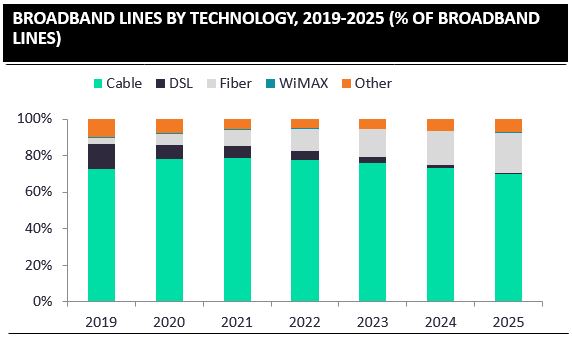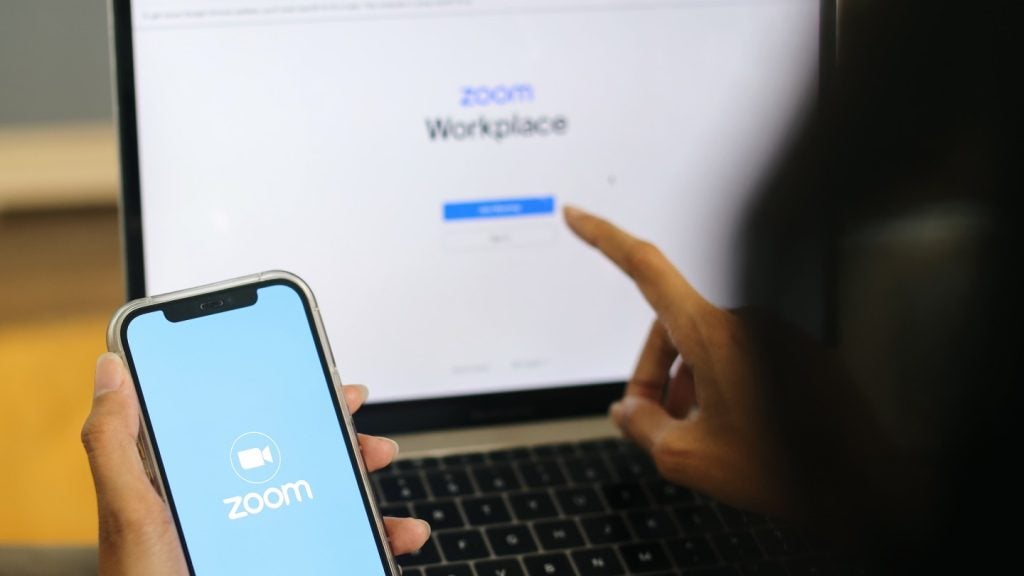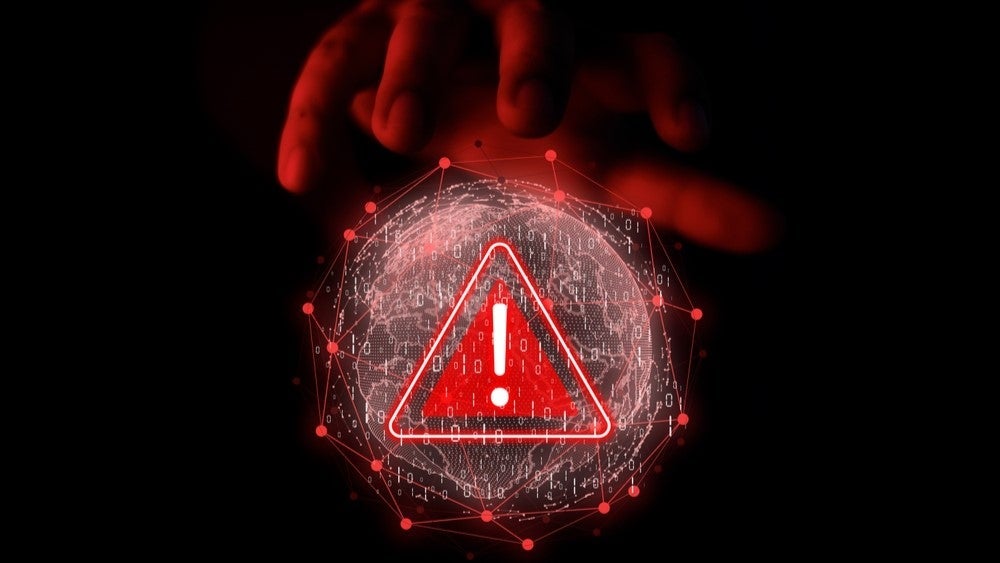Fixed broadband revenue in Peru will expand at a 11.1% CAGR between 2020 and 2025, increasing its weight over the total market’s revenue from 11.5% in 2020 to 17.7% in 2025.
Growth will be mainly driven by increasing cable subscriptions and fiber-optic (FTTH/B) subscriptions over the forecast period. Fixed broadband penetration of households will jump from 7.5% in 2020 to 11.0% in 2025.
At the end of 2020, cable accounted for 77.9% of the total fixed broadband lines estimated for year-end 2020, followed by DSL (7.8%) and fiber (6.3%). GlobalData projects that Peru cable subscription will decline through 2025 and will account for an estimated 70.1% share by 2025. On the other hand, fiber’s share of the total broadband lines will increase from 6.3% in 2020 to 22.0% by year-end 2025.

In February 2021, the Peru Ministerio de Transportes y Comunicaciones (MTC) launched a rural connectivity project to narrow the country’s digital divide by providing internet access to 3.2 million citizens.
How well do you really know your competitors?
Access the most comprehensive Company Profiles on the market, powered by GlobalData. Save hours of research. Gain competitive edge.

Thank you!
Your download email will arrive shortly
Not ready to buy yet? Download a free sample
We are confident about the unique quality of our Company Profiles. However, we want you to make the most beneficial decision for your business, so we offer a free sample that you can download by submitting the below form
By GlobalDataThe project, with a total estimated cost of US$13.6 million (PEN50 million ), will focus on three areas of work.
The first one will use satellite technology to connect 1,151 public institutions in 860 remote locations in Loreto, Ucayali, Madre de Dios and Amazonas regions.
The second will involve rolling out 6,531 free hotspots across the Huancavelica, Ayacucho, Apurimac, Lambayeque, Cusco, and Lima regions for 2.2 million citizens, out of which 3,636 hotspots will be deployed in 2021.
In the third one, the government will set-up nearly 1,000 Digital Access Centres (Centros de Acceso Digital, CAD) to promote ICT literacy.








